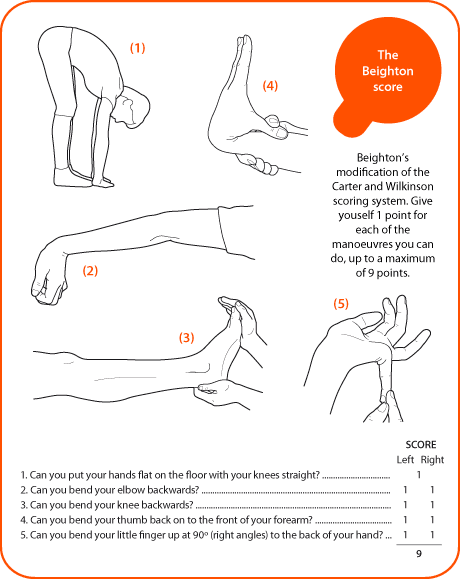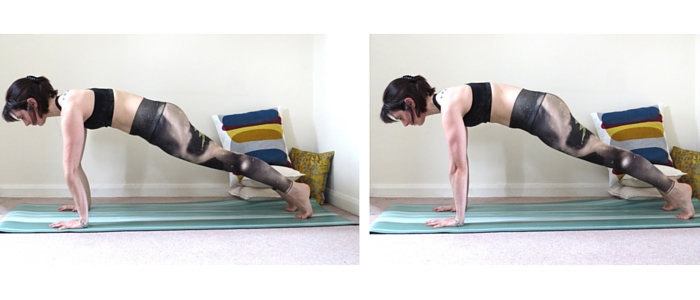Today’s post will touch on something a little more personal. Hypermobility (or, preferably, hyperlaxity) is not something I talk too long to people about because the reaction (or maybe what I perceive as the reaction) to it is usually along the lines of ‘eh, that’s not really a problem – you’re lucky to be so flexible!’ with an unspoken addendum to stop humblebragging.
The issue of hypermobility isn’t commonly discussed because it doesn’t seem like much of a problem. How bad can being too flexible be, right? In this case, it isn’t simply being lucky enough to have a larger range of motion.
Mobility itself indicates stability alongside flexibility, which is why hyperlaxity rather than hypermobility seems like a more appropriate term. For those who are hypermobile, the lack of stability is a problem since it is the ligaments connecting the joints which are loose rather than the muscles, so mobility is definitely something that needs working on.
This might not be interesting to anyone other than me but I felt like putting together some of the things I’ve discovered about being hypermobile, from research as well as learning along the way from personal experience.
What Exactly Is Hypermobility?
An explanation from Hypermobility Syndromes Association:
A person’s joints are lax because they have looser and more stretchy connective tissues, particularly their ligaments and tendons (soft tissues). Hypermobile people can easily injure soft tissues around joints because their joints can twist or over extend easily, and may partially dislocate (or ‘sublux’), or in some cases fully dislocate joints.
Structural defects in the body’s connective tissue proteins, allow micro-traumas, which are often not visible on tests such as MRIs, to occur repeatedly in the same area of connective tissue without completely healing. Injuries associated with the hypermobility syndromes may cause immediate ‘acute’ pain and can also lead to longer-term ‘persistent pain’, which can be severe and widespread.
So How Do I Know If I’m Hypermobile?
The Beighton score is commonly used to find out whether you are hypermobile, where points are given for each joint that is hypermobile.

WebMD states some common mobility tests which can also be done:
- The wrist and thumb can be moved downward so the thumb touches the forearm.
- The little fingers can be extended back beyond 90 degrees.
- When standing, the knees are abnormally bowed backward when viewed from the side.
- When fully extended, the arms bend further than normal (beyond straight).
- When bending at the waist, with the knees straight, the child or adult can put their palms flat on the floor.
Some other symptoms which I didn’t even realize were symptoms are “[s]evere fatigue that persists, despite rest or a proper nights sleep”, muscle fatigue “caused by muscles having to work hard to stabilise joints” as well as easy bruising due to insufficient collagen production. (Hypermobility Syndromes Association)
Being aware of what you are feeling during movement or stretches can also help you to assess whether you are hypermobile or not. I have realized that when I ‘stretch’ at my end range, I only feel a dull pulling at my joints (such as feeling it at the front or back of my knees during a hamstring or quadriceps stretch) and no stretch in the muscle at all. Before I became more mindful of my posture, my natural tendency was also to lean on my joints rather than use my muscles to hold myself up, so that hinging on my joints when I was standing, walking, or doing things like hanging and planks resulted in a pulling feeling in my hip, shoulder and elbow joints or even some soreness for a few days.
What’s the Big Deal?
Doesn’t this just mean that I’m not affected by immobile hips in a squat or a tight chest during dips? Well, not exactly. As we’ve established, the range of motion from hypermobility comes from the ligaments rather than the muscles, so you can still have tight muscles even if you can reach longer ranges of motion than other people can.
If you haven’t been training mindfully, then the muscles being weak in addition to being tight will mean less support and force production at those end ranges. It can feel unstable and, in the worst case scenarios, easier for joint dislocations or injuries to occur.
- Mechanically Disadvantaged:
Katy Bowman likes to compare ligaments to the ‘seat belts’ of a joint, which is a good starting point to understanding how loose ligaments can impact your movement:
Ligaments are the backup system to large-force application, yet most of you out there reading this are driving (read: moving) your body around with no brakes (read: muscles). You don’t have a clue how to use the brakes (read: muscles) so you depend on your seat belt (read: ligaments) to keep you connected.
Without that seat belt to depend on, hypermobile folks’ muscles will have to work harder in order to compensate.
What this translates to in my experience is doing away with any ideas of going to the bottom or pushing to your end range of motion. Since there isn’t that seat belt in the form of your ligaments to, for example, bounce out of the bottom of a squat or a bench press, a lot of working out revolves around slowing down a movement and going only as far as you can maintain stability through the muscles. A lot of that stability will come from the core muscles, which contrary to popular conception doesn’t only mean ‘abs’ – they also include the various deep core muscles as well as the glutes, lats, and pelvic floor muscles.
From a mechanical point of view, there is also the issue of alignment. When a weight-bearing action is involved, whether it is a bodyweight exercise or lifting weights or sports, you ideally want to stack your joints in order to bear the weight in a way that doesn’t put pressure on them. Having skewed alignment such as overextended elbows can also make related exercises such as pull ups, push ups or even a simple plank difficult (not to mention stressful for the joint) if you haven’t learned to arrange your joints in order to translate force and stack the weight efficiently.

Photo from The Hypermobile Yogi.
- Mental Focus
Which leads us to the mental aspect. It goes to follow that in order to align your joints in a way that won’t put stress on them, people with hypermobility will want to maintain constant focus on where their body parts are throughout an entire movement. Without the proprioception that the ligaments can provide, it can be difficult to sense when you should stop during a movement in order to prevent injury, muscle strain or using the wrong muscle group.
Common advice is to observe what a normal range of motion is and mimic that for a period of time until you don’t have to consciously think about it as much. So not only are you going through the physical fatigue of working out, it is a mental exercise as well in the sense that you will want to be constantly keeping that picture in mind in addition to monitoring your alignment and ‘manually’, so to speak, creating tension through your muscles instead of relying on the ‘seatbelt’ of a ligament. Phew!
Stay tuned for Part II, where I will share what people with hypermobility should focus on and also a little more of my own experience!

One thought on “What’s Wrong with Hypermobility? Part I”